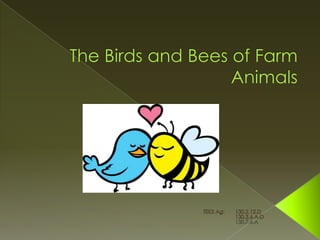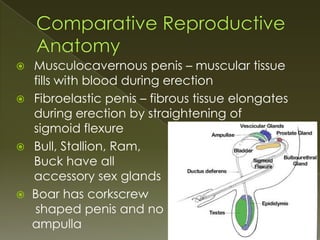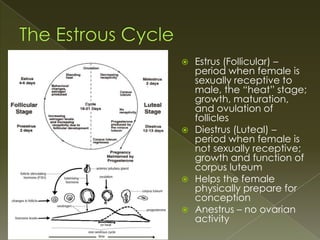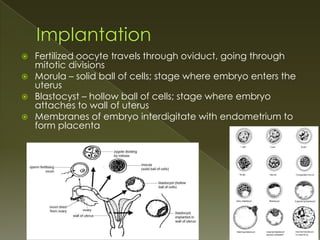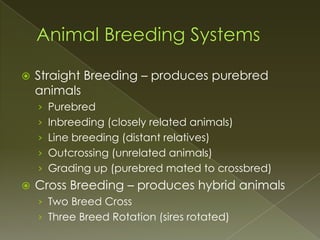The document summarizes the anatomy and physiology of bovine reproduction. It describes the main female and male reproductive organs of cows and their functions in the estrous cycle, fertilization, gestation, parturition, and lactation. It also discusses breeding methods for cattle like natural mating, artificial insemination, and embryo transfer.
